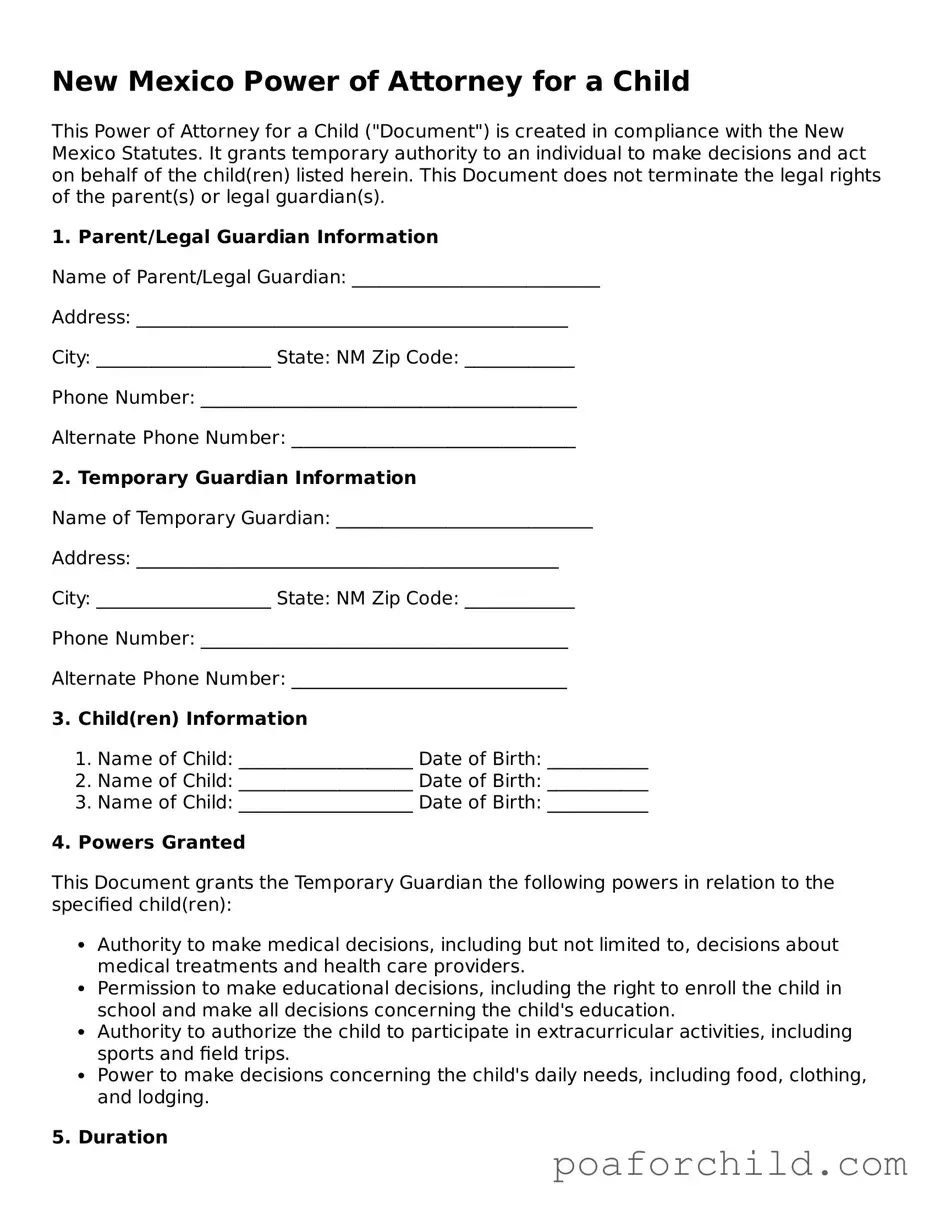Detailed Guide for Using New Mexico Power of Attorney for a Child
Filling out the New Mexico Power of Attorney for a Child form is a responsible step in ensuring that a child's needs are met during times when the parents or legal guardians are not available. It grants another adult the authority to make decisions and take actions on behalf of the child in various aspects, including healthcare, education, and general welfare. The process may seem daunting, but by following clear, step-by-step instructions, it can be completed accurately and effectively, providing peace of mind for all parties involved.
- Start by gathering all necessary information, including the full legal names and addresses of the child, the person granting power of attorney (the parent or legal guardian), and the person who will be receiving the power of attorney.
- On the top section of the form, fill out the date on which the power of attorney will become effective. This is the date from which the appointed person will begin making decisions for the child.
- In the section labeled "Child's Information," provide the child's full legal name, date of birth, and current address. This step ensures that the document is clearly associated with the correct child.
- Under "Parent/Guardian Information," write the name(s) and address(es) of the child's current legal parent(s) or guardian(s). If there is more than one, include information for each to ensure that the form comprehensively reflects their consent.
- In the section reserved for the "Attorney-in-Fact," input the name, relationship to the child, and address of the individual who is being granted power of attorney. Be sure to double-check the spelling and details to avoid any confusion regarding their identity.
- Detail the specific powers being granted to the attorney-in-fact. This section allows the parent or legal guardian to specify which decisions the appointed individual will be authorized to make on behalf of the child. It's important to be as clear and explicit as possible to avoid any ambiguity.
- Decide on the duration of the power of attorney. Some choose a fixed period, while others may align it with a specific event or condition's occurrence. Write this information clearly in the designated section to avoid any disputes about the term of authority granted.
- Both the person granting power and the person receiving it must sign and date the form in the presence of a notary public. This step is crucial as it validates the document, giving it legal authority.
- Lastly, take the form to a notary public for official notarization. The notary will verify the identities of the signers and affix a seal, making the document legally binding. After this process, the document is considered valid, and the powers listed are in effect.
Once completed, it's advisable to make several copies of the notarized Power of Attorney for a Child form. Keep the original in a safe place and distribute copies to relevant parties, such as the child's school and healthcare providers, to ensure that the individual granted power of attorney can act on the child's behalf without delay. This proactive step helps facilitate a smoother transition and supports the child's well-being by ensuring their needs continue to be met, even in the absence of their parent or legal guardian.
